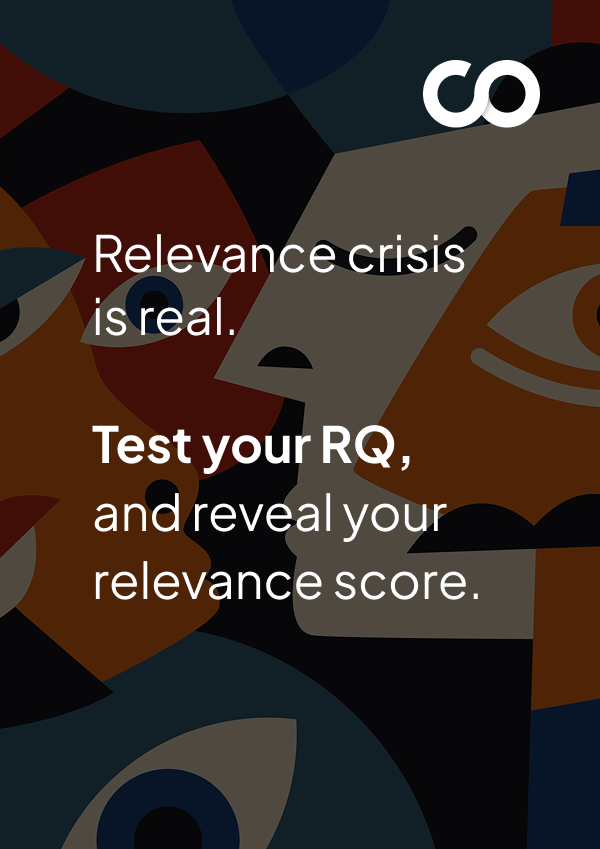Design-Led eCommerce Development
Built for Scale, Designed for Sales

Built for Scale, Designed for Sales
How can businesses design websites and applications that not only keep pace with this growth but also drive user engagement and conversions?
U.S. retail ecommerce reached nearly $293 billion in Q2 2025, reflecting steady growth in digital commerce. Enterprise organizations need websites that scale with this expansion while delivering the immersive experiences customers have come to expect.
The right infrastructure handles peak traffic, integrates with existing systems, and adapts to evolving consumer behavior without constant overhauls.
Successful ecommerce websites balance performance with flexibility. They work hitch-free across channels, support international markets, and provide meaningful analytics that inform business decisions. Speed, reliability, and user experience directly impact conversion rates and customer lifetime value.
At Codewave, we use a mix of top-of-the-line tools to create scalable e-commerce platforms. For design, we rely on Figma for prototyping, Adobe XD for high-fidelity UI, and Webflow for responsive designs. On the development side, we opt for React, Node.js, and Shopify to ensure high-performance, user-centric e-commerce solutions.
We’ve partnered with organizations like Accel Partners, the Government of Karnataka, and Microsoft to deliver solutions that handle millions of transactions while maintaining the agility needed for rapid iteration.

The outcome?
2x
Greater User Engagement
3x
Faster Transactions
1.5x
ROI on Design
50%
Lesser Rework
Download The Master Guide For Building Delightful, Sticky Apps In 2025.
Build your app like a PRO. Nail everything from that first lightbulb moment to the first million.
Everything You Get with Our E-commerce Solutions
At Codewave, we offer comprehensive e-commerce web design and development services that cover all aspects of building a robust, scalable platform. Our solutions are crafted to address the unique needs of online businesses, ensuring a smooth and efficient experience for both customers and administrators.
Shoppers often struggle with fragmented journeys, leading to abandoned carts and lost sales. By unifying product catalogs, reviews, and payment processing, we create an experience where customers can browse, compare, and buy without interruptions.
Example: Imagine a customer searching for a laptop. They can view product details, compare specs, read user reviews, and check product availability without needing to switch between tabs or pages. The system will verify real-time inventory and dynamic pricing, ensuring they can check out with minimal friction, all in a single seamless flow.
A complicated checkout process often results in cart abandonment. We simplify the experience by introducing features like auto-fill for returning customers, integrated payment gateways, and progress indicators, making it easier for customers to complete their purchases quickly and securely.
Example: A user purchasing clothing can automatically populate their shipping details based on their profile. Discounts are applied at checkout, and multiple payment options are available. The process is quick, easy, and secure, all from a single checkout page.
Consumers expect personalized shopping experiences. By integrating AI-driven recommendation engines, we can suggest relevant products based on individual browsing behavior and past purchases, increasing engagement and conversions.
Example: A shopper interested in winter jackets may see recommendations for matching scarves, gloves, or boots. These suggestions are tailored to their interests and browsing history, boosting cross-sell opportunities and enhancing the shopping experience.
With mobile shopping on the rise, having a responsive design is essential. Our e-commerce platforms are fully optimized for mobile, ensuring customers have a smooth shopping experience across all devices, whether they’re on a smartphone, tablet, or desktop.
Example: Whether browsing from a phone or a desktop, customers will see a fully optimized website that adapts to the screen size, making navigation intuitive and easy. Features like dropdown menus, large product images, and quick checkout buttons adjust automatically for the best mobile shopping experience.
Managing inventory across multiple channels can be complex. Our solutions integrate real-time inventory syncing, ensuring stock levels are accurate across all platforms and preventing overselling.
Example: When an item runs out of stock, it’s instantly marked as unavailable on the site, and new stock is updated automatically. If a product becomes available again, customers are notified in real time, creating a smooth and reliable shopping experience.
Offering a variety of payment options is critical for online shoppers. We integrate multiple secure payment gateways, making it easy for customers to complete their purchases using the payment method that best suits them.
Example: Customers can choose from various payment methods, including credit cards, PayPal, digital wallets, and BNPL options. The integration ensures every transaction is securely processed, without any interruptions during checkout.
For an e-commerce site to succeed, it must be easily discoverable. We optimize your website’s structure, content, and metadata to ensure your products and categories rank well on search engines, driving organic traffic and improving visibility.
Example: We optimize product pages with the right keywords, tags, and meta descriptions. Each category page is structured to align with SEO best practices, improving search engine rankings. This helps drive traffic to your site and ensures that potential customers can easily find your products.
Legal requirements and accessibility standards continue to evolve. Non-compliant sites face litigation risks and exclude potential customers with disabilities.
We build to WCAG 2.1 AA standards with keyboard navigation, screen reader compatibility, and sufficient color contrast. GDPR and CCPA compliance features include consent management and data export capabilities. Regular audits ensure ongoing compliance.
Example: Suppose a healthcare products company needs ADA-compliant ecommerce. We’ll develop a site where all functionality works via keyboard navigation. Product images include descriptive alt text. Form errors announce clearly to screen readers. The site includes adjustable text sizing and high-contrast mode options.
Build your next-generation commerce platform
Every Feature Earns Its Place
The difference between ecommerce sites that drive revenue and those that stagnate comes down to specific technical and design decisions made during development.
Cart abandonment happens when friction exceeds motivation. Every unnecessary click, confusing label, or delayed response increases the likelihood that customers leave without purchasing.
We design checkout flows that minimize cognitive load and input requirements. Address autocomplete reduces typing.
Inline validation catches errors before form submission. Progress indicators show exactly how many steps remain. Guest checkout removes account creation barriers. Payment form design follows established patterns that customers recognize instantly.
In Action: Say a home decor retailer is facing high mobile cart abandonment. We'll redesign the checkout to a single-page flow with collapsible sections. Shipping and billing addresses autofill from postal codes.
Card type detection happens automatically based on the first digits entered. Error messages appear next to the relevant fields instead of requiring users to scroll. The site saves progress so customers can complete purchases later without re-entering information.
Organic traffic depends on the search engines' understanding of site structure and content relevance. Poor technical implementation limits crawl efficiency and prevents pages from ranking for relevant queries.
We implement structured data markup for products, reviews, pricing, and availability that appears in rich results. XML sitemaps organize URL hierarchies with priority signals. Page speed optimization includes Core Web Vitals improvements through image compression, code splitting, and server response time reduction.
Internal linking architecture distributes authority to key category and product pages. We configure canonical tags to prevent duplicate content issues and implement hreflang for international sites.
In Action: Consider a specialty coffee roaster wanting to rank for origin-specific searches. We'll implement a product schema that includes origin, roast level, flavor notes, and brewing methods.
Category pages for each origin will include educational content about growing regions and processing methods. We'll build a blog section covering brewing techniques that internally links to relevant products.
Technical optimization reduces page load times significantly. Structured data enables rich snippets showing price, availability, and ratings in search results.
Generic product recommendations miss opportunities to show customers items they'll actually buy. When every visitor sees identical homepage content, you ignore behavioral signals that indicate purchase intent.
We build recommendation engines that analyze browsing patterns, cart contents, purchase history, and similar customer segments.
The system dynamically adjusts homepage layouts, category page sorting, and product suggestions based on individual user behavior. Email integrations extend personalization beyond the site with abandoned cart reminders and product recommendations.
In Action: Imagine an athletic footwear brand wanting to increase average order value. We'll develop a recommendation system that identifies browsing patterns indicating specific sports interests.
Someone viewing trail running shoes will see recommendations for hydration packs and GPS watches. Cart pages suggest complementary items like moisture-wicking socks or shoe care products. The system tracks which recommendation placements generate conversions and optimizes positioning accordingly.
Mobile commerce now represents the majority of online transactions. Sites designed for desktop and adapted for mobile create suboptimal experiences that hurt conversion rates and search rankings.
We design mobile interfaces first, then scale up for larger screens. Touch targets meet minimum size requirements for easy tapping. Navigation patterns work with thumb-zone ergonomics.
Product images adapt to screen size without losing critical details. Forms minimize typing through smart defaults and predictive inputs. Page weight stays optimized for reasonable load times on cellular connections.
In Action: Consider a beauty products retailer who generates most traffic from mobile devices but sees lower mobile conversion rates. We'll redesign with mobile as the primary interface.
Product pages load hero images first, specifications below the fold. Color and size selectors use large touch-friendly buttons. The add-to-cart button stays fixed at the bottom of the screen, always accessible.
Category filters appear as a slide-out panel instead of a sidebar. Checkout condenses to essential fields with saved payment options prominent.
Our Tried and True 5-Step Method
First, we'll sit down with your team to understand your business goals, technical constraints, and what's frustrating your customers. You'll walk us through feature priorities, the systems you need to integrate with, and how you measure success. We'll also look at what your competitors are doing to spot opportunities they're missing.
Next, we dig into your analytics and talk to your actual customers. This shows us how people really behave on your site, not how we think they should. We'll map out the complete journey from first visit to purchase, finding exactly where people get stuck or give up. These insights shape personas based on real data instead of guesswork.
Before writing any code, we'll create interactive Figma prototypes of your key flows like browsing, adding to cart, and checking out. You can click through them with your team to test if the navigation makes sense and information appears where you expect it. We'll also test these prototypes with your target customers to catch problems while they're still easy to fix.
Development moves in two-week cycles where you see progress regularly and give feedback. We build React components piece by piece, starting small and assembling them into full pages.
Your backend APIs will develop at the same pace, with automated tests running constantly to catch bugs early. We'll also stress-test everything to make sure it handles your peak traffic without slowing down.
When launch day comes, we'll start with a soft rollout to catch any real-world issues before full traffic hits. After that, we monitor page speed, conversion rates, and error logs to spot problems fast. You'll have A/B testing tools ready to go, so you can keep improving checkout flows and product pages based on what your customers actually do.
Industry-Specific E-Commerce Solutions for Sustainable Growth
Industry | How We Can Help |
We design secure, user-friendly financial platforms with seamless transaction integrations, ensuring both security and scalability for your digital financial services. | |
We build engaging, interactive e-learning platforms, course management systems, and secure payment gateways, enhancing the learning experience and simplifying admin tasks. | |
From patient portals to e-commerce platforms for health products, we create solutions that ensure privacy, streamline appointments, and enhance patient interactions. | |
We develop ag-tech platforms that streamline the supply chain, enhance farm-to-table transparency, and simplify the buying and selling of agricultural products. | |
We design energy-efficient platforms with smart grid integration, real-time monitoring, and user-friendly interfaces, helping energy companies lead in innovation. | |
We create real-time tracking systems, efficient booking platforms, and fleet management solutions, ensuring your transportation business runs smoothly and effectively. | |
We build high-performing, fully integrated e-commerce platforms with advanced features like inventory management, customer personalization, and seamless payment processing. |
Our Tech Stack: Powering E-commerce with the Right Tools
Technology choices should serve your business requirements, not the other way around. We select tools based on scalability needs, team capabilities, integration requirements, and long-term maintainability.
While we have preferred technologies we know well, we’re not locked into any single stack. If your project needs something different, we’ll use what makes sense for your specific situation.
Category | Tools & Technologies | Purpose |
Design & Prototyping | Figma, Sketch, Adobe XD, InVision | Collaborative design, prototyping, UI/UX design, and rapid iteration with real-time feedback. |
Frontend Development | React.js, Next.js, Webflow, HTML5/CSS3 | Building dynamic, responsive, and fast-loading user interfaces, with SEO-friendly optimization. |
E-commerce Platforms & CMS | WordPress with WooCommerce, Shopify, Magento | Content-driven, flexible e-commerce platforms tailored to business needs of all sizes. |
Backend Development | Node.js, Express.js, MongoDB, MySQL/PostgreSQL | Scalable backend services for processing high traffic, APIs, and structured/unstructured data. |
Performance & Optimization | AWS, Google Cloud, Azure, Docker, Redis | Scalable cloud infrastructure, efficient deployments, caching, and optimized performance. |
We transform companies!
Codewave is an award-winning company that transforms businesses by generating ideas, building products, and accelerating growth.
A network of excellence. Our partners.
Delivering Scalable E-commerce Solutions to Global Leaders
Trusted by over 300 e-commerce brands, we create platforms that scale with your business. Our expertise spans key industries, helping businesses thrive under real-world pressures.
Ready When You Are
Your customers are ready to buy. Your ecommerce platform should make that easy. We’ll help you build a site that handles your catalog complexity, converts browsers into buyers, and scales with your growth.
Start your project today to get ahead of your competitors. Contact Codewave for a strategy session today.
Frequently asked questions
Timeline depends on complexity and feature requirements. A standard ecommerce site with custom design takes 12-16 weeks from kickoff to launch. More complex builds with custom integrations, advanced features, or large product catalogs may take 20-24 weeks. We’ll give you a detailed timeline after understanding your specific needs.
Yes. We build integrations with ERPs, inventory management systems, CRMs, and other business tools. Common integrations include NetSuite, SAP, Salesforce, and custom APIs. We’ll assess your current systems during discovery and plan the integration approach.
Post-launch support includes monitoring, bug fixes, and performance optimization for the first 90 days. After that, you can choose ongoing maintenance plans or manage updates internally. We provide documentation and training so your team can handle day-to-day content and product updates.
Both. We develop custom solutions when your requirements exceed what platforms offer, and we also work with Shopify, WooCommerce, and Magento when they fit your needs. The choice depends on your catalog size, customization requirements, and technical team capabilities.
Projects typically range from $50,000 to $250,000+, depending on complexity, features, and integrations. A standard build with custom design and core ecommerce features starts around $75,000. We’ll provide a detailed estimate after understanding your requirements during discovery.































































